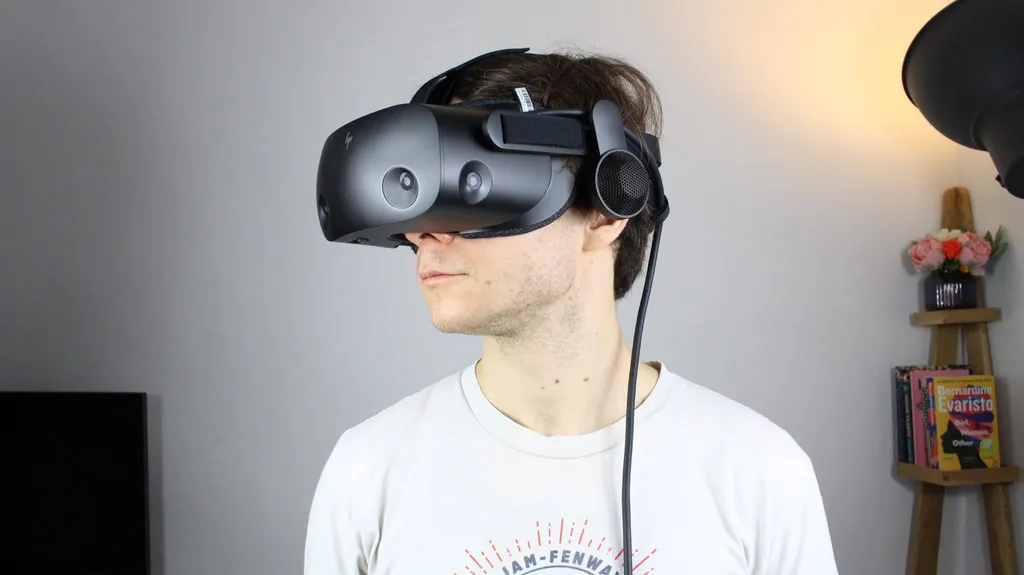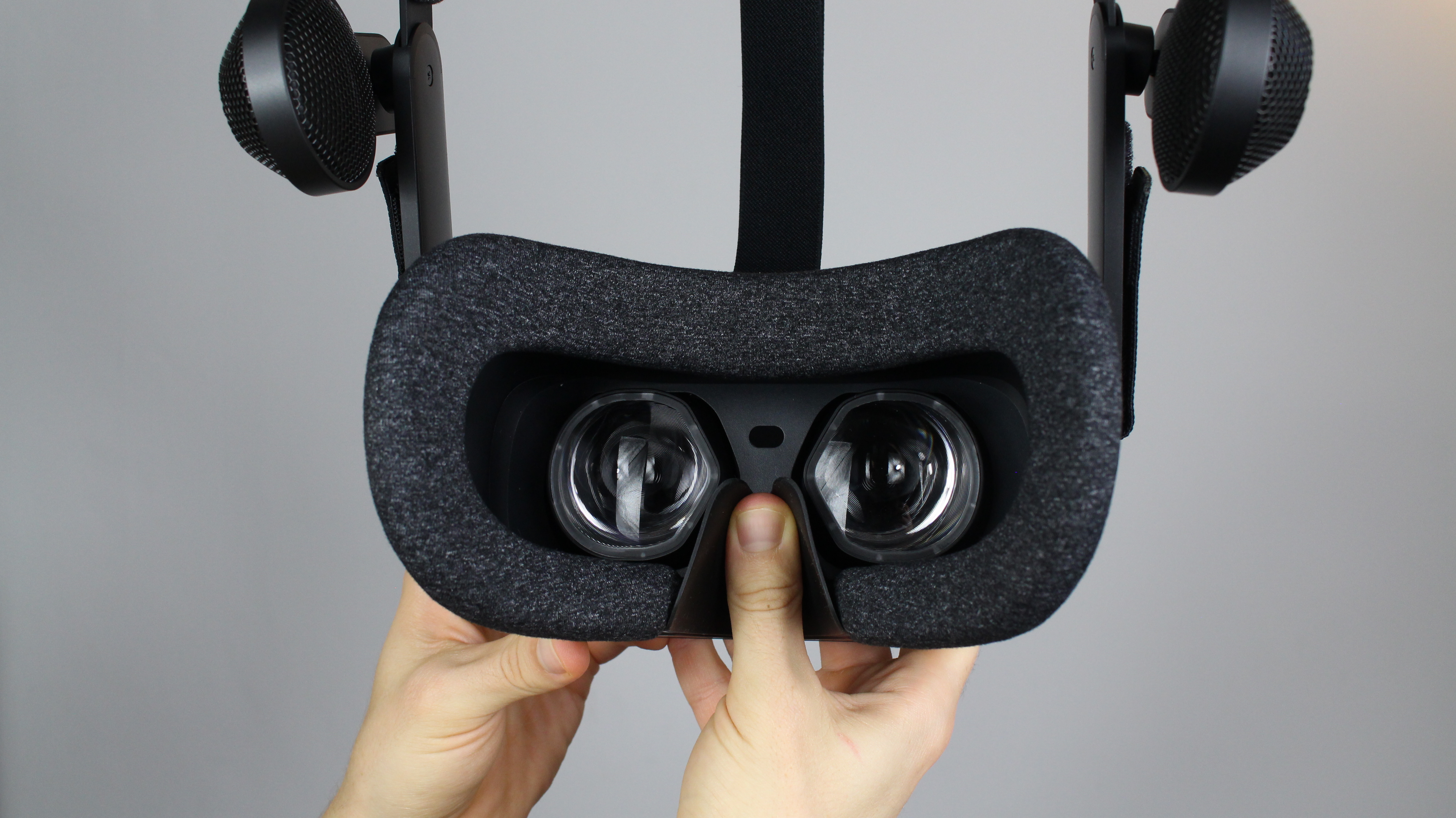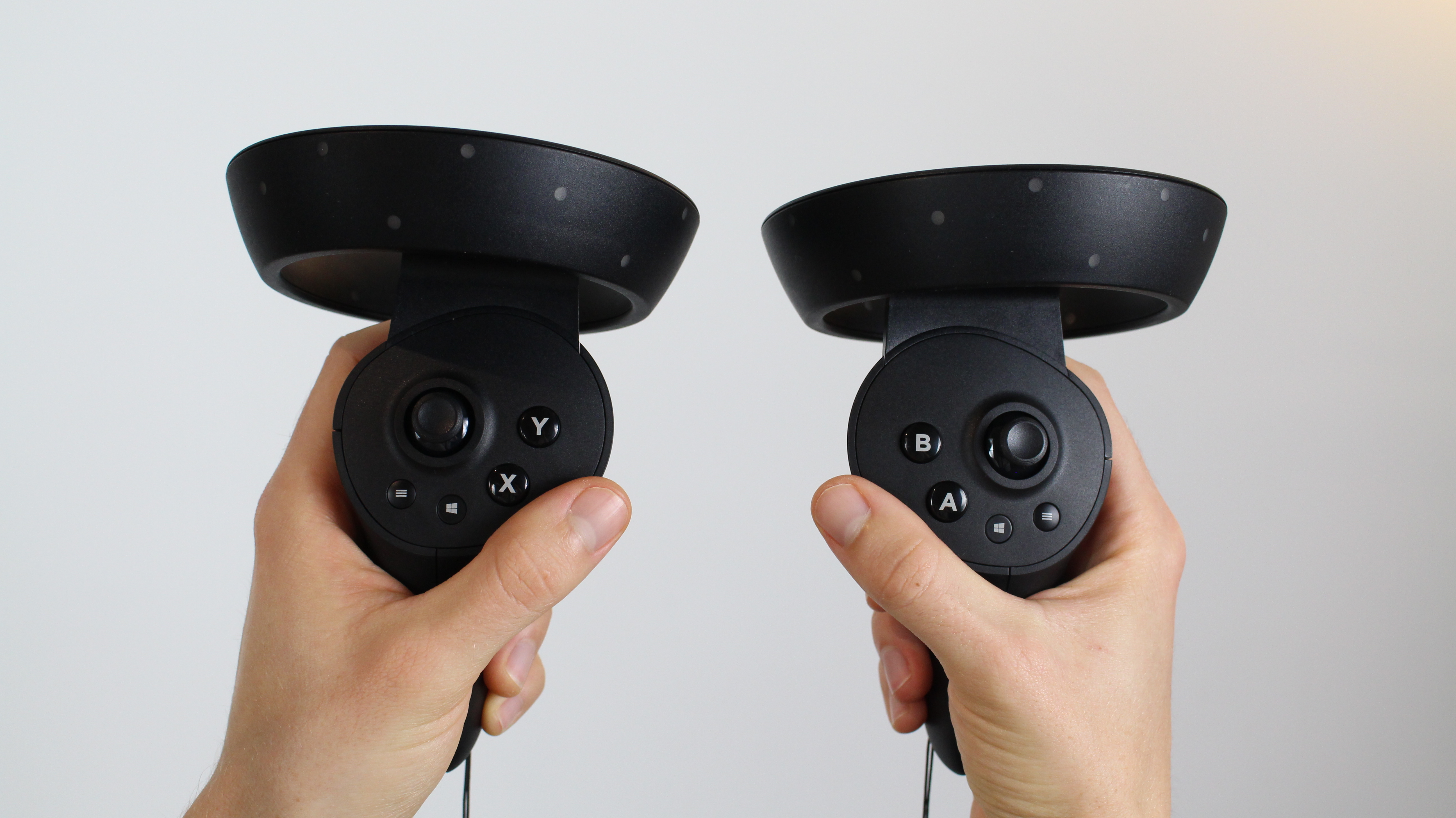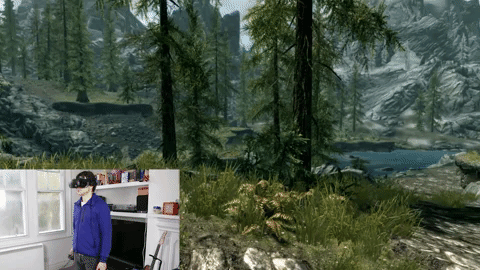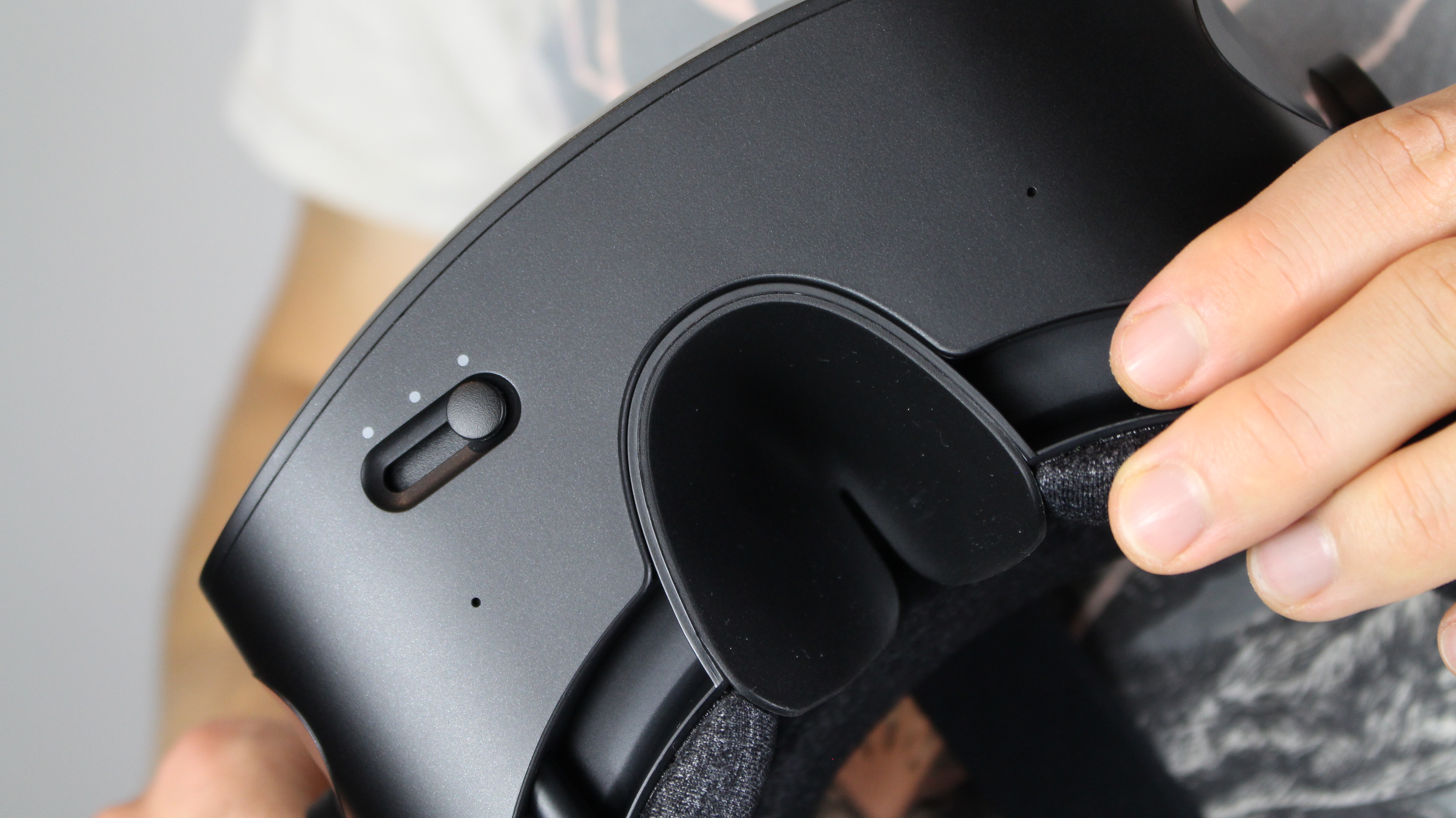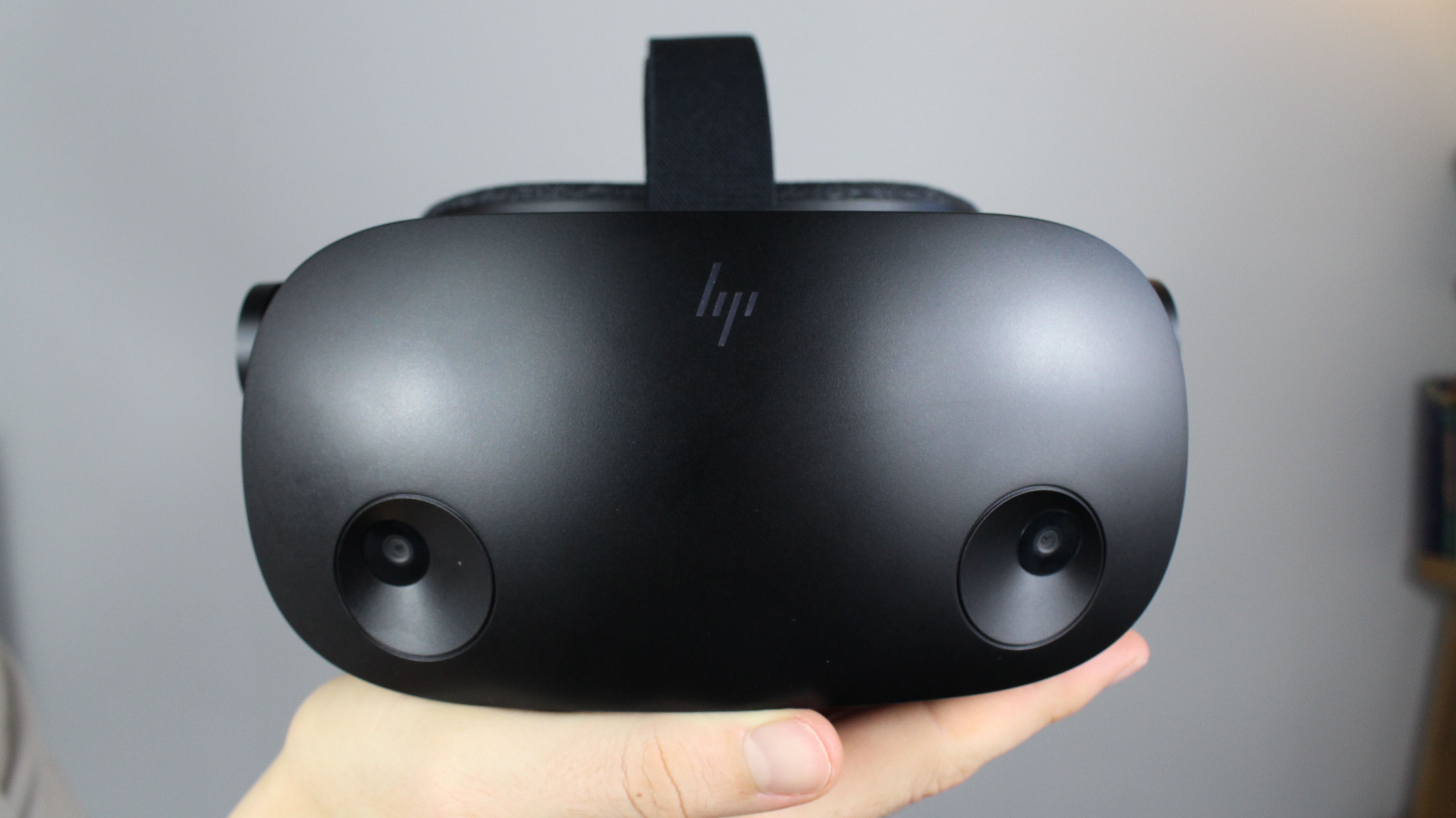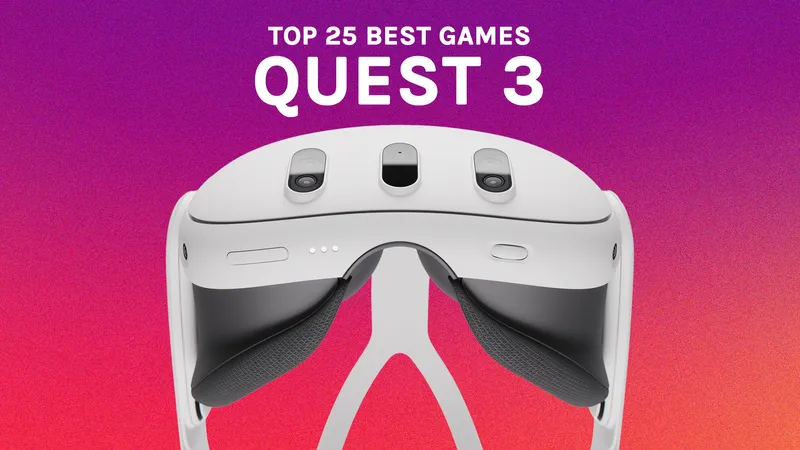Can the combined forces of HP, Microsoft and Valve deliver a PC VR headset strong enough to take on Facebook? Find out in our HP Reverb G2 review!
It’s tough to envy HP on the eve of Reverb G2’s shipping. No matter how mighty your spec sheet — and these specs are indeed mighty — there’s a tiny tetherless elephant in the room for any VR headset launching in the near future.
Give the Reverb G2 its fair shake, though. Because, stiff as the competition may be, there are people that want to jump into VR without making a commitment to a Facebook account, and are instead married to the PC VR library they started building up four years ago. For those people, the HP Reverb G2 is a viable upgrade with amazing clarity, but there are still some big issues to consider.
History Lesson
The original Reverb, released in 2019, raised an eyebrow with is 2160 x 2160 per-eye resolution. It offered crystal clear VR yet to be matched by Facebook, Valve or even any of the other headsets in the Microsoft Mixed Reality line of which it was a part. But other aspects of the headset, like the ergonomics and two-camera inside-out tracking, left a little to be desired.
Fast forward roughly 18 months and Reverb G2 remains ahead of the curve with the same display (Quest 2 comes second place with 1,832 × 1,920 per eye) but comes packing another two cameras for better tracking and even improved lenses, audio and comfort thanks to a partnership with Valve. In more ways than one, this is a bit of a Frankenstein’s monster of a headset. On the hardware front, the visor itself appears all HP, but the strap and off ear speakers are extremely similar to Valve Index.
I myself haven’t tried out the original Reverb for comparison but, stacked up to other VR headsets in 2020, Reverb’s display still strikes me as remarkably sharp. If you’re still using 2016 – early 2019-era PC headsets then the difference is night and day; Reverb G2 is like a breath of fresh air… for your eyes. Tiny details that I’ve simply learned not to expect from the visual VR experience, like telling individual blades of grass apart or seeing the whites of a character’s eyes from a distance suddenly become visible, creating more textured, believable virtual worlds as a result. Even if you’ve grown accustomed to either Index (1440 x 1600 per eye) or Quest 2’s resolutions like I have, Reverb G2 boasts a very noticeable upper hand in this department.
Sensory Overload
Of course, one of the great things about trying out any new generation of VR is getting to re-experience some of your favorite games and apps with an instant makeover. So I dug back into some real classics that have been left gathering dust for the past year.
Yet again I felt like I was seeing The Elder Scrolls V: Skyrim VR with fresh eyes as I emerged from the keep of Helgen and walked between the ferns and flowers. The tips of my arrows finally appeared lethally sharp and more clearly seeing the pupils of a character’s eyes conjured a stronger sense of connection than before. In Google Earth VR, I revisited last year’s vacation to Japan and marveled at sweeping vistas from Hokkaido mountains mixed with the Sapporo skyline, a maze of lush greenery and alleys of windows that, now more than ever, are caught with striking detail. And, yes, that unforgettable opening shot in the more recent Half-Life: Alyx took my breath away all over again, offering a more granular view of City 17 than I’ve yet seen.
Plus I tried some new stuff, few and far between as it may be on PC these days. Ubisoft lends a welcome crispness to the production of an otherwise bizarre little space adventure, AGOS, that had me hypnotized by far-flung stars piercing the cold abyss, while saving myself for the jaw-dropping visuals and intricate cockpit details of Star Wars: Squadrons paid off in droves. If you want to see VR at its sharpest without compromise the Reverb G2 is the only place to do it right now.
The screen door effect isn’t completely abolished here (in fact there’s plenty more ground to cover before it will be), but Reverb G2 still offers easily the best visual experience in VR today. Bear in mind it’s an LCD display, so you won’t be getting as deep black levels as OLED headsets like the original Quest, but the tradeoff is more than worth it. Godrays, too, haven’t been an issue for me – I’ve only really noticed them on bright white text when games are first loading up.
Reverb G2 is also one of the best headsets from an audio perspective too. Like I mentioned, the off ear speakers that dangle from each strap are the same as those seen in the Index, and they remain a pretty perfect audio solution, delivering powerful sound without plugging up your ears and leaving you connected to the real world at the same time. With most other headsets, a pair of earphones or headphones is practically an essential add-on, but not so with the Reverb G2 (note that the headset doesn’t include a 3.5 mm audio port at all).
Controllers and Tracking
But the best optics and audio in the world aren’t worth much good if you get the fundamentals wrong and, for some, this will be Reverb G2’s downfall. The inside-out tracking on the headset is quite good; many people thought two-camera inside out tracking didn’t make the grade with the original Windows MR headsets and Facebook’s Oculus Insight tracking has, quite frankly, spoiled our expectations a little on this front. But, by adding two more cameras, the Reverb G2 headset itself hasn’t put a foot wrong in all of my testing so far, which has included throwing myself to the floor to start sneaking in Skyrim and leaning in for close inspection of Google Earth’s tiny toy model-like landscapes.
I can’t, however, quite say the same about the controllers.
As I said before, the Reverb G2 is something of a Frankenstein’s Monster and, while the headset is very much ahead of the pack in important ways, there are also a fair number of areas where compromise rears its ugly head. Nowhere is this more true than with the controllers. When these two redesigned devices are in clear view of the camera, they work very well, keeping up with as quickly as I can play Beat Saber (which is averaging a C on Hard difficulty if you must know) when in view, but the vertical field of view of the cameras isn’t great.
When I drop my hands down to my waist, as I often do in VR, the tracking struggles to stay consistent. How do I know if I can’t see for myself? Lots of VR games, like Pixel Reef’s sensational Paper Beast, emit a persistent laser-pointer from the controllers and, when I’m playing games with that feature, the line is regularly off by a fair few degrees. Even in Beat Saber itself I would notice my sabers going off at angles at the bottom of a swing, even if that wasn’t enough to ever mess up a move (though I can’t process Expert+ nearly enough to tell you what the impact is there). The controllers also struggle when up close, causing issues with mechanics like archery and boxing, and occlusion for two-handed weapons can be spotty. It’ll correct itself quickly as soon as I bring them back into view, but it’s common enough to cause frequent, annoying distractions in these types of games.
Now, personally, as someone that values convenience in VR more than they do accuracy at the cost of accessibility, this isn’t a huge deal-breaker. But I know for a lot of people, particularly the type of enthusiast that might be looking to upgrade to the Reverb G2 after getting a headset as recent as the Index for high-end gaming, that’s going to be a massive issue. If you value faultless VR tracking above all else, Reverb G2 is not for you.
Put that aside for a moment though and the controllers, well, they still continue to disappoint. The original Windows MR controllers were never popular and this new design is better, but it’s still fairly barebones and oddly proportioned. The enormous tracking rings on both give off a slightly awkward top-heavy feel and the handle quickly curves off at the bottom, making it feel quite stubby for bigger hands. The back trigger, meanwhile, doesn’t sink in very far, stopping just a little short of making me feel like I’ve pulled a gun trigger. It’s a shame, too, not to have any sort of touch sensors for your fingers to keep up with Touch and Index, and the haptic vibration is pretty weak and noisy. The controller does have all the expected buttons and I haven’t yet found any SteamVR apps with compatibility issues that can’t be fixed with a visit to the bindings menu, but overall these aren’t the big step forward for Windows MR controllers I was hoping for. At least they got rid of the ghastly touchpad/joystick hybrid.
Comfort And Storage
And it’s a shame that the controllers aren’t all that comfortable to use because, honestly, the headset itself might be the most comfortable on the market today. There’s no back dial like those on the Index or Quest’s Elite Strap, which makes it slightly more of a hassle to get sitting right every time you put it on. But, once you find that sweet spot, the headset almost disappears from thought. The soft cushioning around all areas of contact keeps fatigue to an absolute minimum over multi-hour play sessions and weight feels almost perfectly distributed from front to back. A brilliant front-flip feature quickly provides access to the real world and has the headset resting comfortably on your forehead at a moment’s notice, with enough space to take a drink from a pint glass (please note I’m reviewing this headset in UK lockdown).
Meanwhile an IPD slider allows you to quickly adjust to the right distance between your eyes, which is a better, faster and wider-ranging option than Quest 2’s three pre-sets.
Oddly enough the headset with the wire removed weighs more than the Quest 2 (610g vs 503g) but that’s being spread more evenly across the device with no bulky compute to store in the front. And yes, you read that right, you can remove the wire directly from the Reverb G2 itself. The face lining is held magnetically making it incredibly easy to quickly take off and then remove or insert the wire into the top of the headset. It’s the first PC VR device I’ve started to unplug from the headset at the end of the play session rather than the PC itself and then neatly store away without the wires, and it feels like a real game-changer for home maintenance, even if I am then just leaving the masses of cords under my desk and unsuccessfully trying to pretend they don’t exist.
Reverb’s knot of wires includes DisplayPort and USB C connections to your PC (mini DisplayPort and USB A adaptors are included in the box) and requires a mains connection with not one but two power bricks tangled up in there somewhere. That’s three individual wires to handle as opposed to, say, the one USB/DisplayPort splitter at the end of the Rift S or just that one USB cable you’ll need for Oculus Link. Even by modern PC VR standards, this setup feels a little dated. At least inside-out tracking means you won’t need any external sensors dotted around the room.
The cable length is around six meters so the vast majority of us won’t have to worry about it not having enough length for our play space, although the tug of the wire was ever-present as I played. It’s a real shame there’s not a native wireless streaming option for Reverb G2 at launch, because doing away with the wires and delivering a Virtual Desktop on Quest-type experience for those that could sustain the connection — which admittedly isn’t many — would make the Reverb G2 significantly more attractive.
[vc_row][vc_column][vc_cta h2=””]HP Reverb G2 Review: Who Is This Headset For?
Somewhat unfortunately for HP, the Reverb G2 enters the fray during a transformative moment for the VR industry. The Oculus Quest 2 does away with the need for a PC while also connecting to them, has its own great display (though not as clear as G2’s) and starts at $299. Comparatively, G2’s high $599 asking price and dependency on PC make it seem stuck in 2016, at least at first. That’s especially true when you consider Quest 2 can play almost all the same apps Reverb G2 can with a PC and USB-C cable.
The fact of the matter is Reverb G2 can’t contend with the Quest 2 in terms of mass-market appeal, but does it need to? The future of PC VR might not seem as bright as Quest’s but developers like Stress Level Zero do see big success on the platform and there’s a clear hunger for hardware that pushes the boundaries of VR, especially without signing up to Facebook.
Even with those considerations in-hand, though, Reverb G2 still has a lot stacked against it. You could argue that the kit is perfect for enthusiast VR users, but I doubt the type of gamer with dedicated space to spend hours in VR will be willing to overlook the tracking troubles. If you play a lot of cockpit games like Project Cars 2 and Microsoft Flight Simulator then some of that concern goes away, but that’s a fine niche within an already limited audience. Weighing up the importance of visual clarity over tracking quality is ultimately for you to decide, but I suspect many won’t compromise the latter to improve the former.[/vc_cta][/vc_column][/vc_row][vc_row][vc_column][vc_column_text]
Platform And Performance
Microsoft may have gifted HP with a reference design to take on the VR titans but as a result the Reverb G2 is tied to the rather neglected Windows Mixed Reality platform – the distant third of the three main PC VR ecosystems available today (not counting Viveport considering it still needs SteamVR).
Windows MR is easy to set up and its home environment is functionally pretty similar to Oculus and SteamVR’s offerings, but there’s precious little to do that’s native (or exclusive) to the platform. It’s pretty jarring to enter the hub world and still find everything pretty much right where Microsoft left it when it launched in 2017. That includes podiums for Superhot, Altspace VR and that really rather awful Halo VR game (which, trust me, hasn’t gotten any better) that I’m surprised haven’t grown cobwebs even in VR.
It’s frustrating, too, to have to switch between operating the desktop by pressing the Windows and Y keys, even if you’re using a virtual window inside the home environment, requiring you to stumble over to your keyboard. I’ve also had strange issues like the audio channels randomly switching out which, again, is difficult to know what to attribute to but not a problem I’ve had on any Oculus or Steam-native headset.
This ecosystem went the way of the dodo faster than you can say ‘Windows Phone’ and it’s not clear what, if anything, Reverb G2 can do to breathe new life into it. Don’t buy this headset assuming Microsoft will have a spring clean and improve the experience, but there’s enough goodness in the G2 that it’d be a shame for this to be a swan song for Windows Mixed Reality rather than a new beginning for the company’s next steps in VR. For now, there’s timed exclusivity for the VR support for Microsoft Flight Simulator on the way but, that aside, this is little more than a hurdle between you G2’s main source of VR content – SteamVR.
My testing on Steam has been pretty positive overall, though you’ll want to make sure your PC is up to spec. HP suggests a bare minimum of a GTX 1080 graphics cards but using that spec on my PC with Star Wars: Squadrons brought the game to a grinding halt. I had much better results testing on a 2060 Super. Granted it’s always tough to tell specifically why different builds are causing different issues, but if you want to be extra safe an upgrade to an even newer graphics card may be in order.
HP Reverb G2 Review Final Impressions
The HP Reverb G2 is caught between a rock and a hard place. The incredible display, razor-sharp audio and cozy design capably outweigh a lot of its shortcomings, like lackluster controller ergonomics and an association with the all-but-dead Windows MR platform. When it comes to sheer sensory experience, the kit stands a cut above the competition, offering crystal clear VR that lets you see PC apps in a whole new light.
Fairly consistent controller tracking issues prove to be a thorn in the Reverb G2’s side, however, especially for a device geared towards enthusiasts. We could see updates that improve this side of things, but as it stands, I suspect constant hiccups with field of view and occlusion will be enough to warn off many of the hardcore VR devotees that had hoped to replace their Rifts, Vives or Indexes with this release.
Even if you’re willing to overlook these blips so you can avoid setting up SteamVR base stations, Reverb G2 faces some very stiff competition. Starting at half the price of the G2, the Oculus Quest 2 has better tracking, access to all the same games alongside its own standalone and exclusive ecosystem with a simpler wire setup for PC VR. G2 is still the better device in terms of clarity and audio, but Quest 2 isn’t that far off of it and Facebook is already tackling the image compression issue on Oculus Link. That really only leaves the G2 as a viable option if you’re desperate to avoid Facebook’s account requirement but either still want to get into VR with as little friction as possible or can handle tracking quirks in the name of superior visuals.
Competing with Facebook on this level is a reality HP and the wider VR market will have to reckon with going forward but, taken on its own merits, the Reverb G2 represents the best way to see VR, if not interact with it. Based on where your priorities lie, that might be enough, but the HP Reverb G2 falls short of becoming the new definitive high-end VR experience.
The HP Reverb G2 will be shipping out to the first people that pre-ordered the device this month. This Steam page will direct you to the correct place to order a unit from. Like our HP Reverb G2 review? Let us know in the comments below!

